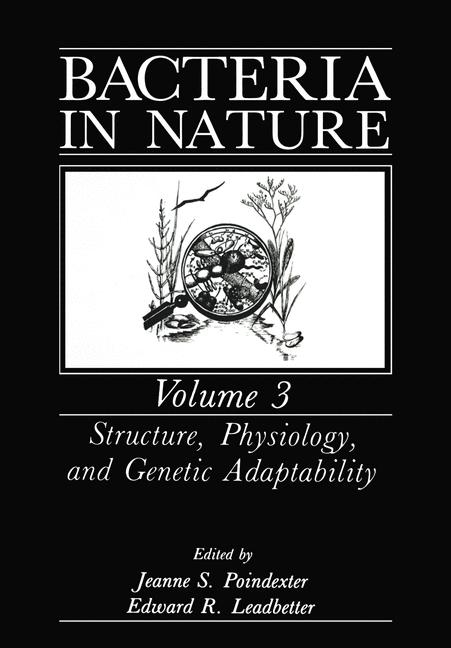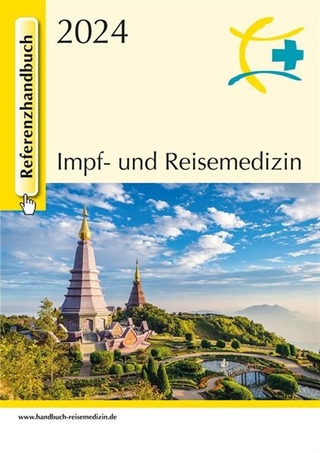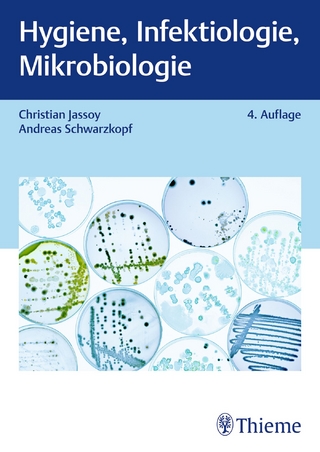
Bacteria in Nature
Kluwer Academic/Plenum Publishers (Verlag)
978-0-306-43173-9 (ISBN)
- Titel ist leider vergriffen;
keine Neuauflage - Artikel merken
1 The Structure of Bacteria.- A Fundamental Design for Bacteria.- Problems in Interpretation.- Design Rationale.- Shape and Form.- Execution and Maintenance of Shape.- Necessity of Organelles.- Concept of the Periplasm.- The Plasma Membrane.- Intracytoplasmic Continuations of the Plasma Membrane.- Discrete Organelles within the Cytoplasm.- Membranous Organelles, Membrane-Bound Granules, and Non-Membrane-Bound Granules.- Nucleoplasm.- Dividing Cells.- Organelles Associated with the Cell Surface.- Flagella.- Pili or Fimbriae.- Spinae.- The Cytosol.- Bacteria in Nature.- Concluding Remarks.- References.- 2 Growth and Survival of Bacteria.- Growth of Bacteria.- Essential Nutrient Requirements.- Nutrient Supply in the Natural Environment.- Influence of Other Environmental Factors.- Growth on Laboratory Media.- Survival of Bacteria.- General Problem of Survival.- Specialized Mechanisms for Survival.- Significance of Reserve Materials.- Survival in Soil and Water.- Survival of Phototrophs on Starvation.- Rumen Bacteria.- Role of the Bacterial Membrane.- Anaerobes and the Role of the Membrane Potential in Survival.- Conclusions.- References.- 3 Chemistry and Metabolism of Intracellular Reserves.- Criteria for Classification of a Substance Having Energy-Storage Function.- Glycogen and Other ?-1,4-Glucans.- Occurrence in Bacteria.- Biological Functions of Bacterial Glycogen.- Structural Studies.- Enzymatic Reactions Involved in Glycogen Synthesis.- Regulation of the ADP-Glucose Pathway to Glycogen Synthesis.- Genetic Regulation of Glycogen Synthesis.- Cloning of the Glycogen Biosynthetic Enzyme Structural Genes of E. coli.- Degradation of Bacterial Glycogen.- d(–)-Poly-?-Hydroxybutyric Acid.- Occurrence.- Chemistry and Structural Studies of Poly-?-Hydroxybutyrate.- Chemical Synthesis of d-Poly-?-Hydroxybutyrate.- Composition and Structure of Polyhydroxybutyrate Granules.- Estimation of Poly-?-Hydroxybutyrate.- Physiological Conditions Causing Poly-?-Hydroxybutyrate Accumulation.- Enzymatic Reactions Involved in Synthesis and Degradation of Poly-?-Hydroxybutyrate.- Degradation of Poly-?-Hydroxybutyrate.- Functions of Poly-?-Hydroxybutyrate.- Polyphosphate.- Occurrence of Polyphosphates in Microorganisms.- Chemical Structure of the Polyphosphates.- Detection and Estimation of Polyphosphate.- Synthesis and Utilization of Polyphosphate in Bacteria.- Polyphosphate Accumulation and Utilization in Yeast.- Enzymatic Aspects of Polyphosphate Synthesis.- Regulation of Polyphosphate Metabolism.- Physiological Functions of Polyphosphate.- General Conclusions.- References.- 4 Chemical Unity and Diversity in Bacterial Catabolism.- Physiological Determinants of Degradative Pathways: The Need to Satisfy Energy Requirements in a Variety of Environments.- Bacterial Catabolism and the Terrestrial Carbon Cycle.- Some Thermodynamic Considerations.- Energy-Rich Compounds as Biochemical Reagents.- Bacterial Degradation and Availability of Oxygen.- Substrate-Level Phosphorylations.- Enzymes Used to Prepare the Structures of Growth Substrates for Participation in Energy-Yielding Processes.- Aldolases, Thiolases, ?-Diketone Hydrolases, and ?-Decarboxylases.- Modification of the Chemical Structure of a Metabolite Prior to Its Breakdown.- Degradation of Catabolites Formed by Opening the Benzene Nucleus.- Initiating Attack on Bacterial Growth Substrates.- Dioxygenases.- Aromatic Hydroxylases.- Alicyclic Compounds as Substrates for Mono-Oxygenases.- Amino Acid Catabolism.- Bacterial Degradation of Synthetic Compounds.- Cometabolism.- Summary of Degradation by Meta-Fission.- Degradation of Aromatics by Ortho-Fission.- Release of Methanol and Halide Ions from Aromatics.- Abiotic Transformation of Environmental Pollutants.- Summary.- References.- 5 Biotic and Abiotic Release of Inorganic Substances Exploited by Bacteria.- Nature of the Inorganic Environment.- Mineral Substrates.- Decomposition of Rocks and Minerals.- Conditions Supporting Microbe-Mediated Release of Inorganic Substances.- Physiological and Metabolic Mechanisms Responsible for Solubilization of Inorganic Substances.- Direct Microbial Attack on Minerals.- Indirect Attack on Minerals.- Strain Variation in the Natural Leaching Environment.- Microbial Metal Chelates.- Bacterial Exploitation of Inorganic Substances Released from Minerals and Rocks.- Iron.- Other Metals.- Practical Applications of Microbe-Mediated Release of Inorganic Substances.- Summary.- References.- 6 Regulation of Bacterial Gene Expression.- Target Points for Genetic Regulation.- Transcription Initiation.- Transcript Elongation.- Translation Initiation.- Regulation of mRNA Stability: Retroregulation of the Bacteriophage INT Gene.- Conclusions.- References.- 7 Constancy and Change in Bacterial Genomes.- Constant Features of Bacterial Genomes.- Gene Order.- Size of Genomes.- GC Content.- Sources of Genetic Diversity.- Changes in Chromosomal DNA.- Cytoplasmic Genetic Elements.- Incorporating New DNA into the Chromosome.- Summary.- References.
| Erscheint lt. Verlag | 31.8.1989 |
|---|---|
| Reihe/Serie | Bacteria in Nature ; 3 |
| Zusatzinfo | 62 Illustrations, black and white; XIV, 406 p. 62 illus. |
| Verlagsort | New York |
| Sprache | englisch |
| Gewicht | 870 g |
| Themenwelt | Medizin / Pharmazie ► Medizinische Fachgebiete ► Mikrobiologie / Infektologie / Reisemedizin |
| Medizin / Pharmazie ► Studium | |
| ISBN-10 | 0-306-43173-4 / 0306431734 |
| ISBN-13 | 978-0-306-43173-9 / 9780306431739 |
| Zustand | Neuware |
| Haben Sie eine Frage zum Produkt? |
aus dem Bereich


